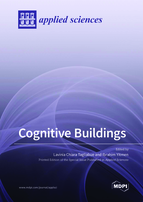Cognitive Buildings
A special issue of Applied Sciences (ISSN 2076-3417). This special issue belongs to the section "Energy Science and Technology".
Deadline for manuscript submissions: closed (30 April 2021) | Viewed by 63333
Special Issue Editors
Interests: sustainability and sustainable buildings; environmental and energy protocols; energy saving; renewable energies; energy retrofit and NZEB; BIM to BEM (building information modelling to building energy modelling) interoperability; cognitive buildings; behavioural design; probabilistic models; building management systems (BMS)
Special Issues, Collections and Topics in MDPI journals
Interests: cognitive digital twins; smart built environment; integration of digital twins and deep learning for smart planning and construction; blockchain technology in construction supply chains; cyber–physical systems for Construction 4.0
Special Issues, Collections and Topics in MDPI journals
Special Issue Information
Dear Colleagues,
Cognitive building is a pioneering topic to envision the future of our built environment. The concept of "cognitive" steps towards a paradigm shift from the static concept of the building as a container of human activities is nearer to the modernist vision of "machine à habiter" of Le Corbusier, where the technological content adds the capability of learning from users' behavior and environmental variables to adapt itself to achieve main goals such as users comfort, energy-saving, flexible functionality, high durability, and good maintainability. The concept is based on digital frameworks and IoT networks towards the smart city concept.
Assoc. Prof. Lavinia Chiara TagliabueAssoc. Prof. Ibrahim Yitmen
Guest Editors
Manuscript Submission Information
Manuscripts should be submitted online at www.mdpi.com by registering and logging in to this website. Once you are registered, click here to go to the submission form. Manuscripts can be submitted until the deadline. All submissions that pass pre-check are peer-reviewed. Accepted papers will be published continuously in the journal (as soon as accepted) and will be listed together on the special issue website. Research articles, review articles as well as short communications are invited. For planned papers, a title and short abstract (about 100 words) can be sent to the Editorial Office for announcement on this website.
Submitted manuscripts should not have been published previously, nor be under consideration for publication elsewhere (except conference proceedings papers). All manuscripts are thoroughly refereed through a single-blind peer-review process. A guide for authors and other relevant information for submission of manuscripts is available on the Instructions for Authors page. Applied Sciences is an international peer-reviewed open access semimonthly journal published by MDPI.
Please visit the Instructions for Authors page before submitting a manuscript. The Article Processing Charge (APC) for publication in this open access journal is 2400 CHF (Swiss Francs). Submitted papers should be well formatted and use good English. Authors may use MDPI's English editing service prior to publication or during author revisions.
Keywords
- Cognitive building
- BMS (building management system)
- BIM-Based technologies
- IoT network
- Uses behavior.







